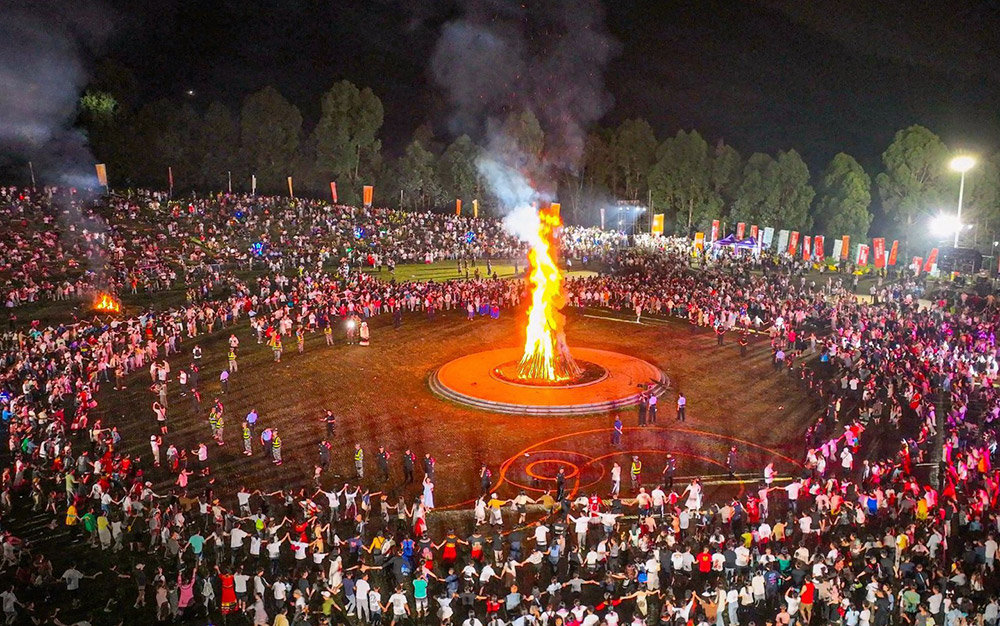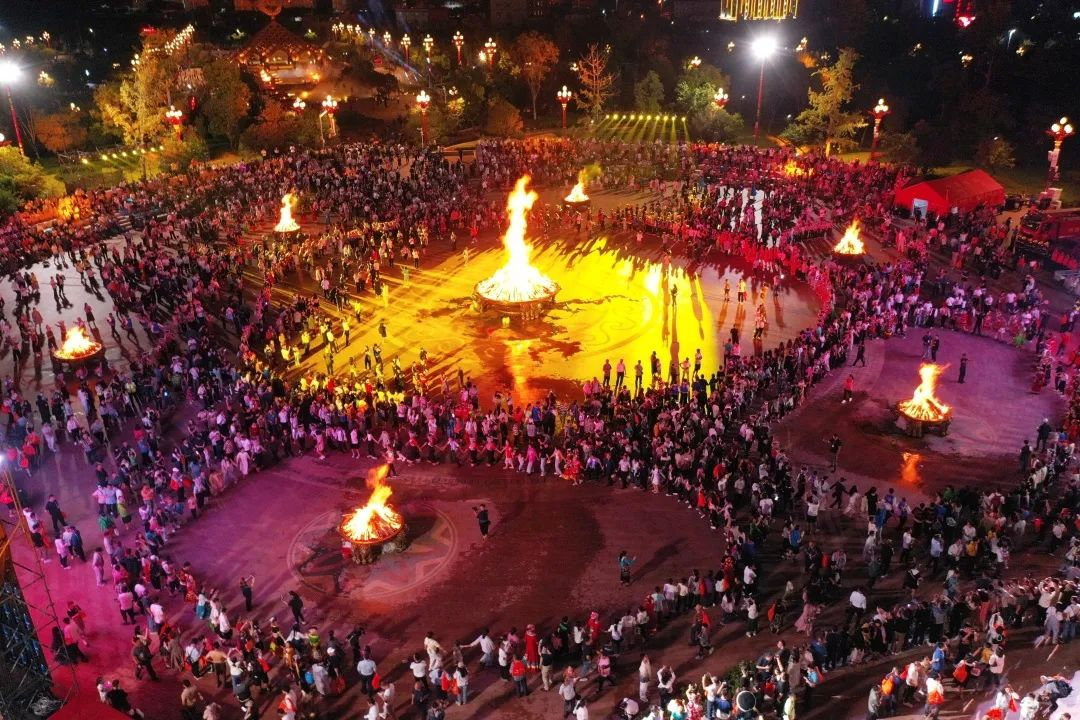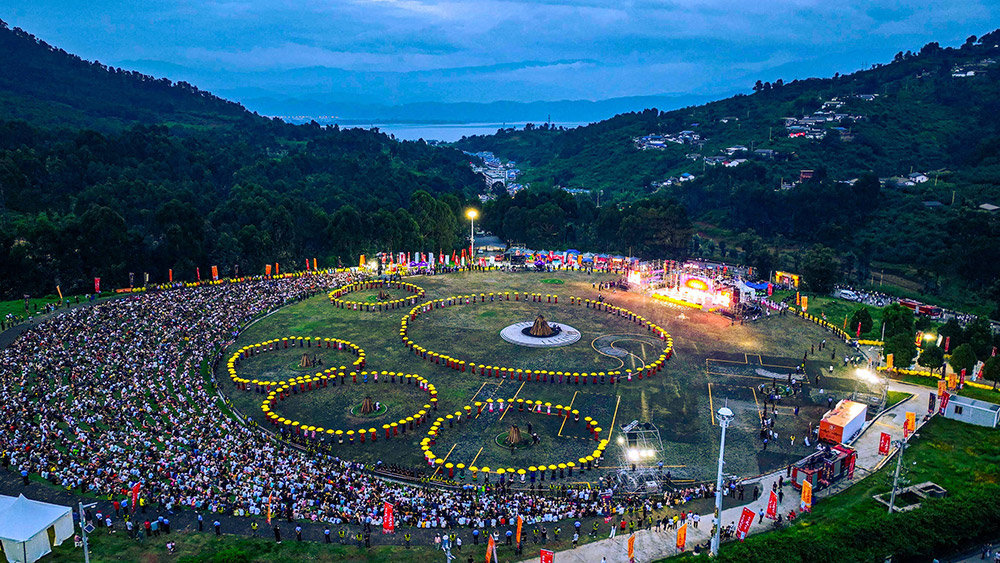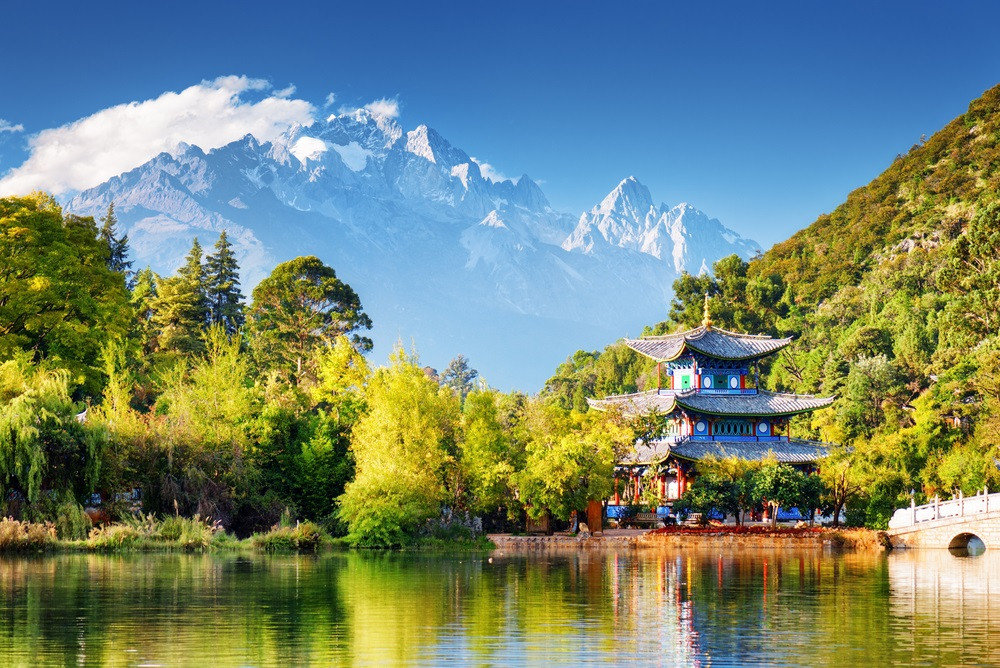When summer deepens into July and the lunar calendar flips to the 24th day of the sixth month, the night skies in parts of southwest China begin to glow—not from stars, but from thousands of dancing flames. This is the Torch Festival (火把节), lovingly called “China’s First Festival of Ethnic Charm” and sometimes praised as the “Oriental Carnival”. Across hills, villages, and valleys, the night becomes a stage for fire, stories, and communal revelry.

Unlike the solemnity of some traditional Chinese festivals, the Torch Festival burns with vitality, laughter, and a communal spirit of both reverence and release. But behind the shimmering flames, the festival is steeped in ancient mythologies, diverse ethnic customs, and the timeless fascination with light against darkness.
Legends Carried by Flame: Stories Behind the Torch Festival
The origins of the Torch Festival flicker in several ethnic legends, particularly among the Yi, Bai, Naxi, Lahu, and Maonan peoples.
For the Yi people, the story begins with a heroic wrestler named Atilaba. According to legend, evil spirits sent locusts to destroy crops, plunging villages into hunger. Atilaba, through wit and strength, captured these spirits and burned them with torches made from pine, leading to a bountiful harvest. From then on, people lit torches every year to drive away evil and ensure prosperity.
Among the Naxi people, the tale turns to a celestial battle. It’s said that the God of Heaven challenged the humans to a wrestling match. If humans lost, they would suffer pestilence; if they won, they’d have peace. The humans triumphed, and to celebrate, they lit torches to light up the earth in gratitude and joy.
The Bai ethnic group shares a different myth, where torches ward off plagues and evil spirits that emerge during the mid-summer heat. Lighting fires became not only a form of protection but also a prayer for health and safety.
Meanwhile, the Lahu and Maonan peoples believe the flames guide ancestors’ spirits home, a luminous bridge between past and present.
Each story is a different spark, but together they kindle a collective belief: light conquers darkness, and fire carries wishes upward into the sky.
A Festival that Travels: Diverse Ethnic Celebrations
The Torch Festival is mainly celebrated in Yunnan, Sichuan, and Guizhou provinces, as well as parts of Guangxi and even into the Liangshan Yi Autonomous Prefecture. Though the 24th day of the sixth lunar month is the official date, some ethnic groups start festivities days earlier or extend them into week-long celebrations.

In Liangshan, Sichuan, the Yi people hold one of the grandest torch processions. Villagers gather with torches high, walking through fields and homes, believing the flames will sweep away disease and misfortune. The night often ends in open fields with bonfire parties, music, and competitive wrestling—a living nod to Atilaba.
Dali in Yunnan, home to many Bai people, sees an elegant blend of fire and art. Streets come alive with torch parades, lanterns, and traditional Bai performances, while dragon and lion dances weave between flickering flames.
The Naxi communities in Lijiang light up their historic towns with hand-crafted torches, their wood-carved homes shimmering with firelight. Locals gather in Sifang Street for music, dance, and the retelling of old legends.
In Xishuangbanna, though better known for its Dai Water Splashing Festival, the Lahu and nearby groups also partake in torch festivities, mingling bonfires with local rituals that honor ancestors.
Even the Maonan people in Guangxi have unique customs—here, torch lighting is combined with rituals for good harvests and family well-being.
Flames, Fun, and Folklore: Customs of the Torch Festival
Torch lighting is only the beginning. The festival is a mosaic of vibrant traditions—each flame accompanied by music, sports, and dazzling performances.
Wrestling matches, inspired by the legendary Atilaba, remain central among Yi communities. Young men test strength, watched by elders and cheered by children with sparklers in hand. Horse racing and bullfighting also capture the excitement of the crowds, turning fields into lively arenas.

As night falls, villages light bonfires big enough to gather hundreds. Around the fires, people dance in circles, their shadows flickering along with the flames. Songs are passed from one voice to the next, blending old melodies with spontaneous laughter.
Children often carry small torches made from pine and bamboo, running through the dark like living fireflies. In some villages, torches are waved around homes, fields, and cattle sheds, an act believed to cleanse spaces of lingering misfortune.
Food plays its part too—grilled meats, rice wine, and local specialties are shared among neighbors and visitors alike. In ethnic areas like Yunnan and Sichuan, traditional cuisines reflect the diversity of the people, with ingredients like wild herbs, sticky rice, and cured meats filling the festive tables.
Where the Flames Begin: Travel to the Heart of the Torch Festival
To truly feel the Torch Festival’s heat, head to its cultural heartlands: Liangshan in Sichuan and Dali, Lijiang, and Kunming in Yunnan.
Liangshan Yi Autonomous Prefecture, Sichuan
In Liangshan, home to one of China’s largest Yi populations, the festival is celebrated with unmatched grandeur. The entire prefecture lights up as communities gather in open fields for massive bonfire parties, traditional wrestling matches, and horse racing events. In cities like Xichang, the air is electric with fireworks, music, and the soft glow of torches reflected in lakes.
Beyond the festival, Liangshan offers natural beauty like Lugu Lake, shared with Yunnan, where misty waters meet the Mosuo people’s matriarchal culture. The region’s Qionghai Lake and Lushan Mountain are perfect for hiking and quiet reflection.
Dali, Yunnan
Dali, known for its laid-back charm and the graceful Bai culture, celebrates the Torch Festival with a mix of bonfires and elegant performances. The ancient city, nestled between the Cangshan Mountains and Erhai Lake, becomes a glowing tapestry of tradition and nature. During the day, you can wander the stone-paved streets of Dali Old Town, explore Three Pagodas of Chongsheng Temple, or cycle along the lakeside under the shade of old willows.
Lijiang, Yunnan
In Lijiang, the Naxi people bring a softer, yet no less spirited, version of the festival. The UNESCO-listed Lijiang Old Town sparkles with torchlight winding through its alleys and bridges. The central Sifang Street becomes a hub of dancing and music, while nearby, the majestic Jade Dragon Snow Mountain stands watch. A day here can take you from torchlit celebrations to exploring the Baisha Murals and Shuhe Ancient Town, each whispering tales of the Silk Road.

Kunming, Yunnan
Although Kunming, Yunnan’s capital, is more urban, the Torch Festival still flickers through its neighborhoods. Cultural showcases, folk performances, and city-wide celebrations ensure that even in the city, the spirit of the festival is alive. When not celebrating, travelers can visit the serene Green Lake Park, the striking Stone Forest, or the vibrant Yunnan Ethnic Village for deeper insights into the province’s cultural mosaic.
A Flicker That Lives On
The Torch Festival is more than a ritual. It’s a living, breathing celebration of heritage, storytelling, and the simple magic of gathering around a flame. Each torch that burns is a reminder of battles won—against pests, plagues, or even the darker corners of the human heart.
To walk in a Torch Festival is to feel connected to something timeless: a fire that was lit generations ago and still finds new reasons to burn. Whether in the crowded squares of Lijiang or the wide fields of Liangshan, each flame is a spark of history, carried forward by hands both young and old.
So if you ever find yourself in southwestern China in the heat of summer, look for the glow beyond the mountains. There, under the lunar calendar’s watchful eye, the night is never too dark to dance.
Contact us today to craft your dream China adventure!

